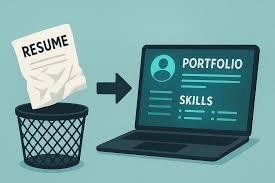
Top 10 Job Search Strategies: Tips to Land Your Dream Career
Top 10 Job Search Strategies: Tips to Land Your Dream Career
The job market today is dynamic, digital, and fiercely competitive. Relying solely on sending out generic resumes and waiting for a callback is a recipe for frustration. Landing your dream career requires a strategic, multifaceted approach—a mix of digital savvy, networking finesse, and old-fashioned persistence.
Your job search isn’t a task; it's a marketing campaign, and you are the product. To secure the role you truly want, you need to stop applying to everything and start applying to the right things with maximum impact.
Here are the top 10 job search strategies that successful candidates use to navigate the modern job market and land their dream career.
1. Stop Applying to Everything: Target Your Search
The "spray and pray" method of application is a waste of your time and energy. Quality always trumps quantity.
-
Define Your Focus: Before you start, identify your top two target roles and your top five target companies. This clarity allows you to customize your application materials with surgical precision.
-
Customize Everything: Every resume and cover letter must be tailored to the specific job description. Use the exact keywords from the posting, which helps you pass the Applicant Tracking System (ATS) filters and proves to the hiring manager that you understand the role.
2. Leverage Your Hidden Network (The 80% Rule)
It's often cited that up to 80% of jobs are filled through networking or before they are ever formally posted. You must tap into this "hidden job market."
-
Start Warm: Tell everyone you know—friends, family, former professors, and past colleagues—exactly what you are looking for. Be specific: "I'm looking for a social media manager role in the health tech sector."
-
Alumni Power: Use LinkedIn's Alumni Tool to find graduates from your college or past workplace who work at your target companies. They are often willing to help due to a shared connection.
3. Master the Informational Interview
The informational interview is the most underrated job search tool. It's a low-pressure way to gather intelligence and turn a cold connection into a warm advocate.
-
Ask for Advice, Not a Job: Reach out to professionals on LinkedIn and ask for 15 minutes of their time to gain insight into their career path or company. Frame your request around their expertise, not your need.
-
The Power of the Referral: If the conversation goes well, they may offer to refer you or connect you with someone else. This internal referral immediately jumps your application to the top of the pile.
4. Optimize Your LinkedIn Profile
Your LinkedIn profile is your professional brand’s landing page. It should be treated as a dynamic, keyword-rich resume that sells your professional story 24/7.
-
Keywords are Key: Fill your Headline and About sections with the keywords, job titles, and skills that recruiters in your target industry use.
-
Be Active: Engage with content relevant to your field, comment thoughtfully, and even share articles. This increases your visibility and positions you as an industry participant, not just a job seeker.
5. Become an Industry Contributor
The best way to get noticed is to demonstrate your value before you even apply.
-
Show Your Work: Create a small, relevant portfolio. If you're a marketing applicant, create a sample campaign strategy. If you're a data analyst, analyze a relevant public dataset.
-
Blog or Post: Write short articles on LinkedIn about industry trends. This demonstrates your passion, expertise, and communication skills—all highly valued qualities.
6. Treat Interviews as Consultations
Shift your mindset from being a passive interviewee hoping for approval to an active problem-solver assessing a challenge.
-
Frame Your Answers as Solutions: For behavioral questions, use the STAR method (Situation, Task, Action, Result). Focus heavily on the Result, quantifying your impact wherever possible.
-
Interview the Company: Ask thoughtful questions that show your strategic thinking. Ask the hiring manager, "What are the biggest challenges this team is facing right now, and how would this role specifically help solve them?"
7. Conduct the "Job Description Audit"
Before submitting an application, perform a deep audit to ensure your materials are aligned.
-
The 70% Rule: Only apply to roles where you meet at least 70% of the requirements. Applying to jobs far outside your experience wastes your time and theirs.
-
Keyword Match: Copy the job description and paste it into a word cloud generator (or simply read it closely) to identify the most frequently used nouns and action verbs. Make sure these words appear naturally in your resume and cover letter.
8. Follow Up Strategically
Persistence is key, but timing and content matter.
-
The Thank You Email: Send a personalized thank-you email to every interviewer within 24 hours. Reference a specific point of discussion to show you were listening and reiterate your enthusiasm.
-
The Check-in: If you haven't heard back within the stated timeline, send a brief, polite follow-up. Do not sound demanding. "I hope you had a great week. I'm following up on my application for the [Role Name] position and remain highly interested. Please let me know if there's any further information I can provide as you continue your process."
9. Prepare for the ATS (Applicant Tracking System)
Most large companies use software (ATS) to scan and filter resumes, meaning a human may never see your application if it isn't formatted correctly.
-
Keep it Simple: Use a clean, standard font (Calibri, Times New Roman, Arial) and a simple layout. Avoid elaborate graphics, columns, or headers/footers that the ATS may struggle to read.
-
Use Keyword Plugs: Ensure the keywords from the job description are present in the Skills and Experience sections of your document.
10. Stay Resilient and Practice Self-Care
The job search is mentally and emotionally taxing. Your energy and attitude in the interview are as important as your qualifications.
-
Scheduled Breaks: Set aside dedicated time each day for searching and applying, but then log off. Do not check your email constantly.
-
Celebrate Small Wins: Celebrate every interview request, every networking connection, and every personalized email you send. Maintaining positive momentum is crucial for resilience.
FAQs on Job Search Strategies
1. How long should I spend on a single application?
For highly targeted applications at your top choice companies, you should spend at least 30 minutes to an hour tailoring your resume and writing a customized cover letter. For applications that come from a job board and are less targeted, 10–15 minutes of quick keyword optimization may suffice.
2. Should I include my GPA on my resume?
Only include your GPA if you are a recent graduate (within the last 3-5 years) and your GPA is 3.5 or higher. If you have significant professional experience, your GPA is no longer relevant and should be removed.
3. When is the best time of day or week to apply for a job?
There is no definitive "best" time, but common wisdom suggests applying early in the week (Monday or Tuesday) and early in the morning (before 10 a.m. local time). This increases the chance that your application will be among the first viewed when the hiring manager or recruiter begins their workday.




